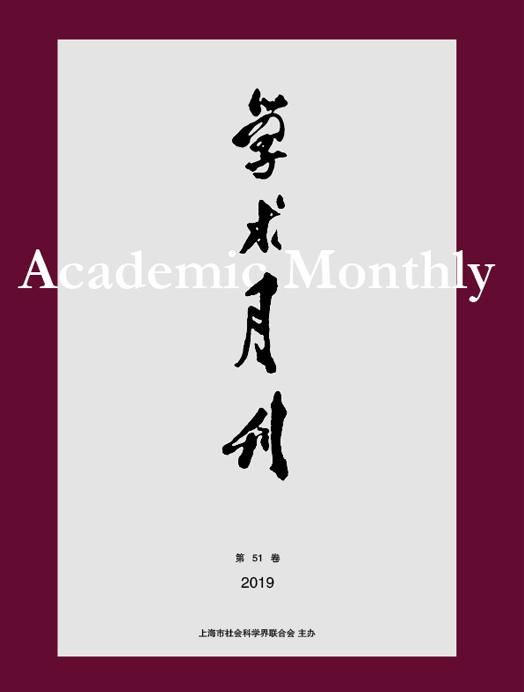Citation:
Huaying DENG. The Spread and Reconstruction of State Type Theories in Modern East Asia[J]. Academic Monthly, 2021, 53(8): 206-216.

The Spread and Reconstruction of State Type Theories in Modern East Asia
-
Abstract
The theory of dividing and comparing state types originated from Europe and America, and was introduced into the East Asia in the middle 19th century. Compared with the slow progress and limited scale of acceptance in China, Meiji Japan quickly formed systematic knowledge of state types, which was mainly about discussing the relationship between forms of state and forms of government. Although the debate on whether and how to distinguish forms of state and forms of government was directly derived from western countries, the fundamental crux lied in the fact that Japan faced the entanglement of monarchy and constitutional politics. After introducing theories of dividing state types from Japan in late Qing Dynasty, China’s political force also developed different ideas on the relationship between forms of state and forms of government due to the different opinions of monarchy and democratic rights. After the 1911 revolution, because of the end of monarchy and the rise of republic, Japanese theories of dividing state types lost their vitality. With the bankruptcy of parliamentary politics and the emergence of class problem, the new revolutionary forces needed to develop new types of state theory which was suitable for the real demand of China’s political situation.
-

-
References
-
Access
-
-
[1]
Li Lei
. . Academic Monthly,
2018, 50(5): 154-162.
-
[2]
Gangsheng BAO
. Why Do Political Crises Take Place:A Theoretical Analysis Based on the Liberal Polity Doctrine. Academic Monthly,
2019, 51(11): 79-94.
-
[3]
. . Academic Monthly,
2017, 49(10): 162-177.
-
[4]
Yuanbao GAO
. Lu Xun Belongs to the World More Than to East Asia. Academic Monthly,
2020, 52(1): 121-141.
-
[5]
TAO Qing
. . Academic Monthly,
2018, 50(8): 69-79.
-
[6]
Zhongmin ZHANG
. The Debates on the Three Kinds of Construction of State Systems during the Hongxian Period. Academic Monthly,
2022, 54(2): 194-204.
-
[7]
Xiaohong YU
, Hui YANG
. Promoting the Political-legal Work against the Backdrop of Political Reform. Academic Monthly,
2019, 51(11): 105-116.
-
[8]
Weiguo ZHANG
, Shuang WANG
. The Rise of the Great Powers: Eastern Asian Model andChinese Road. Academic Monthly,
2019, 51(10): 67-81.
-
[9]
Guofang ZHANG
. The Typological Meaning of the Classification of “Community/Society” from Fernand Tonnes. Academic Monthly,
2019, 51(2): 78-85.
-
[10]
WANG Zhengxu
. What is Good Government—— East Asian Peoples Evaluation of Government Legitimacy and Competence. Academic Monthly,
2023, 55(10): 75-87.
-
[11]
. . Academic Monthly,
2016, 48(03): 120-127.
-
[12]
Lai HE
. From A Special Type of Knowledge to A Special Human Activity. Academic Monthly,
2019, 51(12): 5-12.
-
[13]
CHEN Baifeng
. . Academic Monthly,
2018, 50(8): 93-103.
-
[14]
Bo WANG
. Commercial Reasons in the Theory of Right to War in Early Modern Europe. Academic Monthly,
2020, 52(12): 97-111.
-
[15]
. Faded Radical Politics and Plural Urban Society: Rethinking Modernization Studies. Academic Monthly,
2018, 50(03): 177-184.
-
[16]
Bin YANG
. The Genre of Text Parody and the Evolution of theTypes of Chinese Ancient Fictions:On Text Parody of Plum in the Gold Vase. Academic Monthly,
2019, 51(9): 122-132.
-
[17]
Xuan SHI
. Rationalist Theory of Happiness: The Core Elements of Descartes’ Ethics and Its Influence. Academic Monthly,
2022, 54(7): 35-42.
-
[18]
,
. . Academic Monthly,
2019, 51(8): 179-184.
-
[19]
. . Academic Monthly,
2017, 49(05): 19-30.
-
[20]
. . Academic Monthly,
2017, 49(11): 18-39.
-
-



 沪公网安备 31010102003103号
沪公网安备 31010102003103号 DownLoad:
DownLoad: